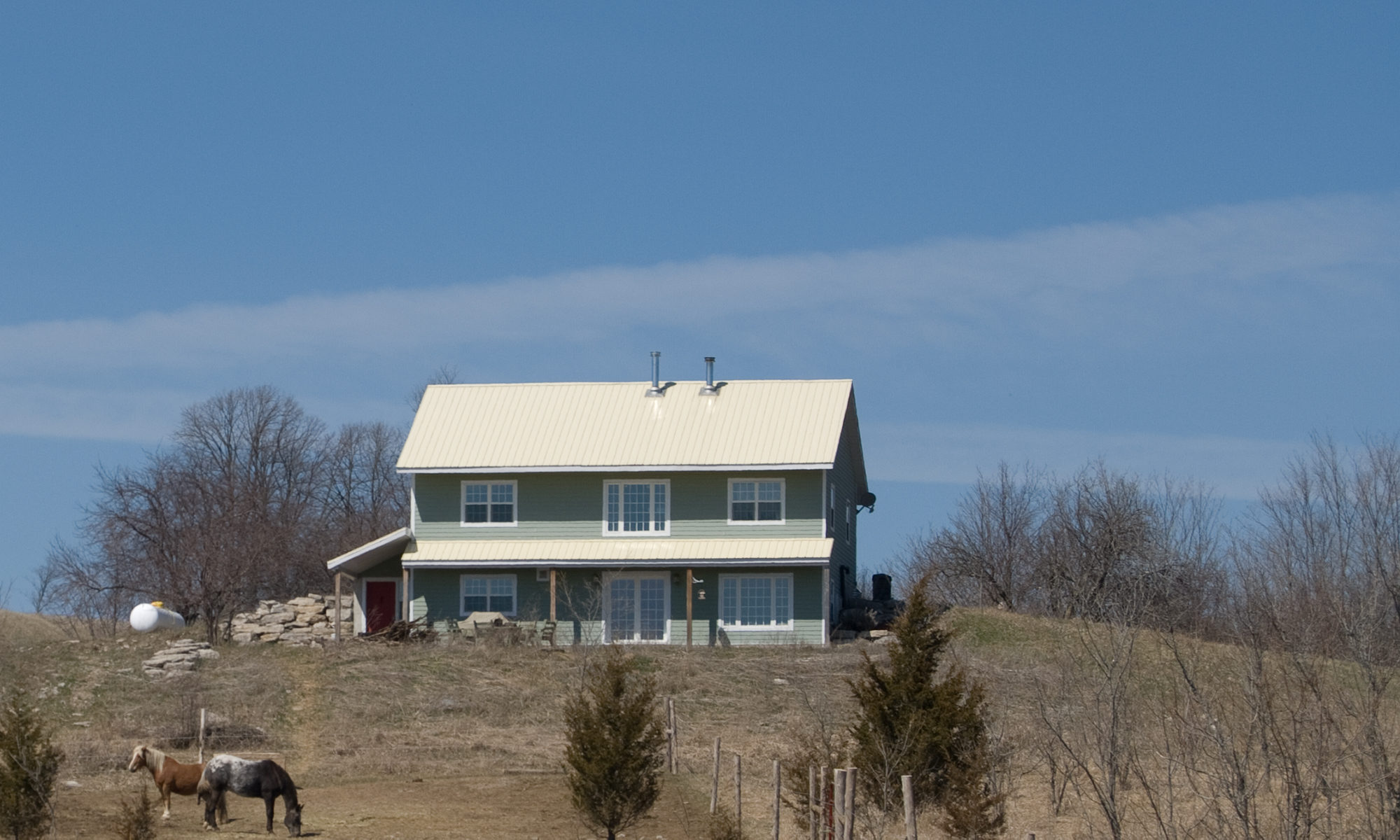A ground source heat pump allows you to extract and dump heat into the ground. In the summer the heat from the house is dumped into the ground, cooling the house. In the winter the heat in the ground is extracted to heat the house. In most areas of Canada, once get some distance underground, the temperature of the ground stays relatively stable at about 11C, and then slowly increases as you go deeper. The ground source heat pumps move the heat to or from the house into a pipe in the ground. There are two ways that the pipes can be installed, either vertically or horizontally. In the vertical method, a well is drilled and the pipe is dropped down the well. In the horizontal method, the pipe is laid in loops at the bottom of a trench that has been dug in the ground, usually 4-6 feet deep. In the vertical systems, the loop can either be open or closed. In the open loop systems, groundwater is extracted from the water table, the heat is added or extracted, and the water is then returned to the ground, either down a second well, or to an above ground body of water such as a stream or pond. In the closed loop system, a U shaped tube is dropped down the well and the water or an antifreeze mixture is pumped down and then back up a connected pipe.
To understand how a ground source heat pump works, first a little bit of basic physics. For a molecule of liquid to speed up enough to become a gas (vaporization) it has to absorb a lot of heat This is called the latent heat of vaporization. The same amount of heat is lost when a gas condenses to become a liquid. To heat up 1 gram of water from 0C to 100C takes 100 calories, but to turn that same gram of water from a liquid at 100C to one gram of vapour at 100C takes 540 calories. You can see that it takes a lot more heat to cause a phase change (liquid to vapour) than to heat a liquid to boiling. When a gas is compressed, it heats up. Image a gas in a cylinder with a piston. When the piston raised into the cylinder, the molecules of gas start bouncing into the walls of the cylinder more rapidly since the molecules are travelling at the same speed, but in a smaller space. This more rapid collisions translates into an increase in temperature. One last bit of science. As the pressure in a gas increases the temperature at which it condenses into a liquid also increases because the molecules of the gas are closer together at a higher pressure and so more easily gain the order required to condense into a liquid.
We will start the process where the refrigerant is a liquid. The liquid refrigerant pumped into a device known as a heat exchanger and is brought into close proximity with the ground temperature water which has been pumped in from the underground loop. The liquid refrigerant then boils to become a low temperature gas and absorbing a large amount of heat in the process (latent heat of vapourisation). This low temperature gas is then sent to the compressor. The compressor increases the pressure in the gas and in the process increases the temperature of the gas. This high temperature gas is then passed into a condenser where cool air or water from the heating system is passed in close proximity to the gas in another heat exchanger and the heat from the gas is transferred to the air or water, causing the refrigerant to condense back into a liquid, and losing the heat of vapourisation. The cooled liquid is then passed through an expansion valve lowering the pressure and therefore the boiling temperature of the liquid. The liquid is once again passed by the ground water and since the pressure has been dropped the liquid can boil at a lower temperature and so absorbs the heat from the groundwater and the process begins again. In the process of transferring heat to the refrigerant, the groundwater is cooled below the ground temperature, and it is then recycled to the ground loop where it heats up again. During the cooling season, the process is reversed and instead of removing heat from the groundwater, heat is added to the groundwater.
In the process of moving the heat from the groundwater to air in the house, electricity is used to run the compressor and the water pumps. The amount of electricity used, however, is less than if the electricity was used in a resistance heater. This is called the Co-efficient Of Performance (COP). A resistance heater is considered to have a COP of 1 and a ground source heat pump will have a COP between 2.8 and 5.2 depending on the type of loop and efficiencies of the pumps and compressors. This means a ground source heat pump will deliver between 2.8 times and 5.2 times as much heat per kilowatt-hour of electricity as a resistance heater.
In my discussions with a heat pump installer, the vertical loops are recommended in Canada due to the more consistent and higher heat available deeper underground since the frost can reach up to 4 feet deep in the more populated areas of the country and even deeper further north.
